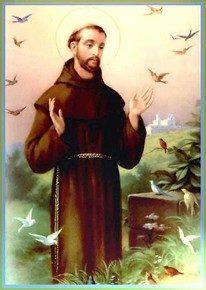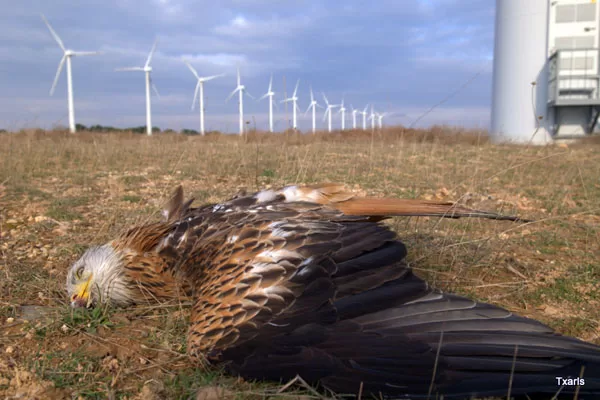Article by: River RATs Residents Against Turbines
Article source: http://www.riverresidentsagainstturbines.com/bird-and-bat-risks.html
Wind turbines chop birds to death. The wind industry has successfully lobbied lawmakers to allow wind turbines to kill birds, including Bald eagles, for the next thirty years. Allowing Iberdrola to kill our region’s Bald eagles and rich variety of avian life is unthinkable and unforgivable.
Bats, for some yet unknown scientific reason, are very attracted to wind turbines. Unfortunately, research shows that bats are also especially vulnerable to wind turbines due to the pressure drops that occur as wind moves through the blades causing an air pressure change that rapidly expands and bursts their small lungs and blood vessels.
Situated in a major East Coast migratory flyway, Horse Creek’s wind turbines would have devastating effects on the area’s bird and bat populations. The Horse Creek project area and the 1000 Islands is home to a huge diversity of avian life. The region is part of an important waterfowl migration corridor and is an important wintering site for thousands of birds. Once again, Iberdrola could not have chosen a worse spot to site their project.
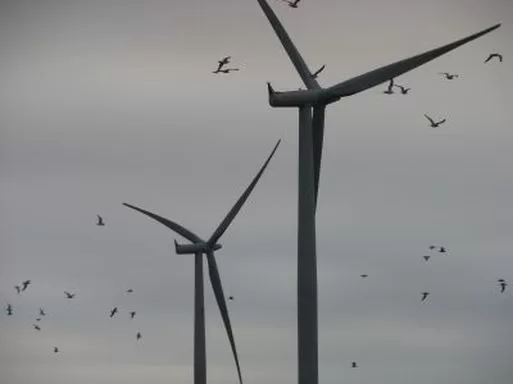
Moreover, the Horse Creek Wind Project is sited within the BirdLife International and Audubon Society Perch Lake Complex Important Bird Area (IBA). IBAs identify the most important areas for bird protection, monitoring, and conservation in the United States.
Audubon New York has formally expressed concerns about the Horse Creek Wind Project to the Public Service Commission in Albany.
Numerous, other IBAs, such as the Upper St. Lawrence / Thousand Islands IBA, are also located near the project area.
Again we ask – Why put all this in jeopardy for the poorly sited Horse Creek project?
Horse Creek Could Kill 24,000 to 72,000 Bird and Bats Each Year
It is useful to look to Europe where wind energy is more widespread to estimate turbine-induced avian death rates. According to the Spanish Ornithological Society (in Iberdrola’s home country), each wind turbine, on average, kills 333 to 1,000 birds and bats annually. This study is bolstered by additional studies from Germany and Sweden, where similar numbers – 309 deaths per turbine in Germany and 895 deaths per turbine in Sweden are recorded.
Applying this same ratio, Horse Creek’s 72 wind turbines, sited in this major avian and bat migration corridor, would kill anywhere from 24,000 to 72,000 birds and bats every year. Over 30 years, Horse Creek could be responsible for 720,00 to 2,160,000 deaths.
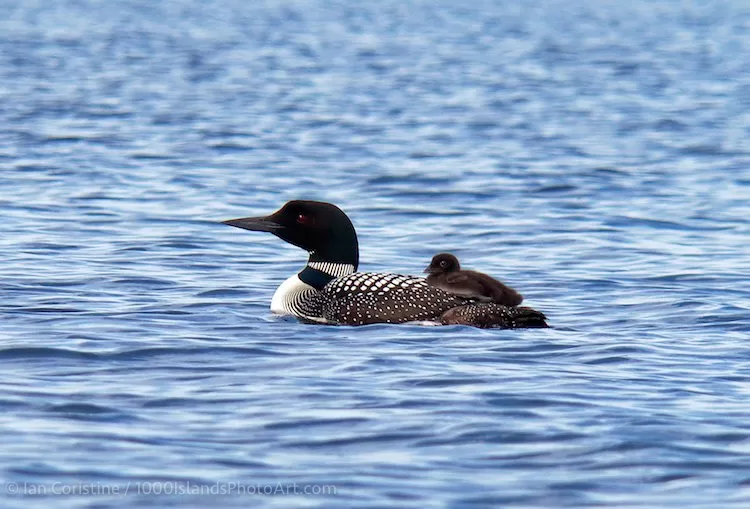
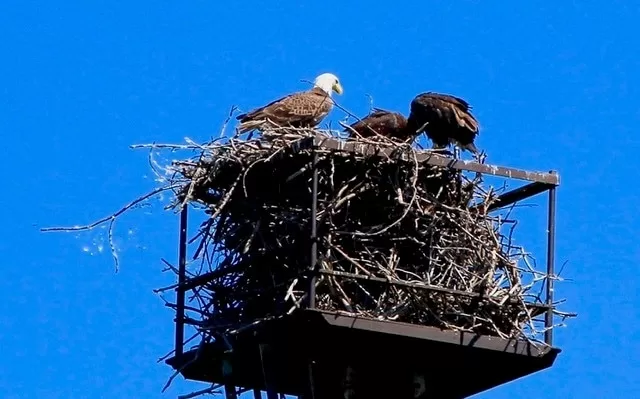
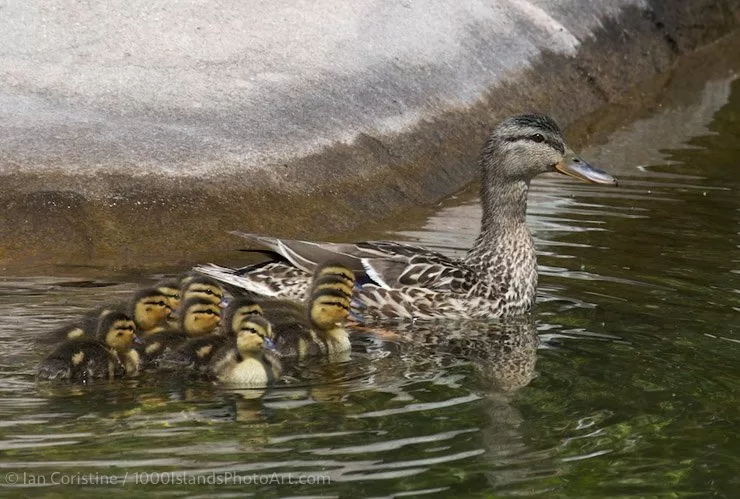
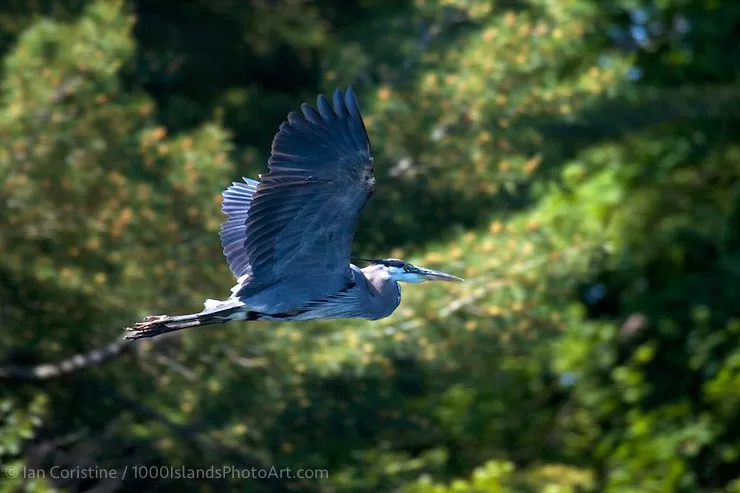
Risks to Audubon Society Important Bird Areas
The Horse Creek Wind Project would be built on an internationally-recognized Important Bird Area (IBA), the Perch Lake Complex. Four other IBAs are found in close proximity to the project area, making the region unsuitable to industrial wind.
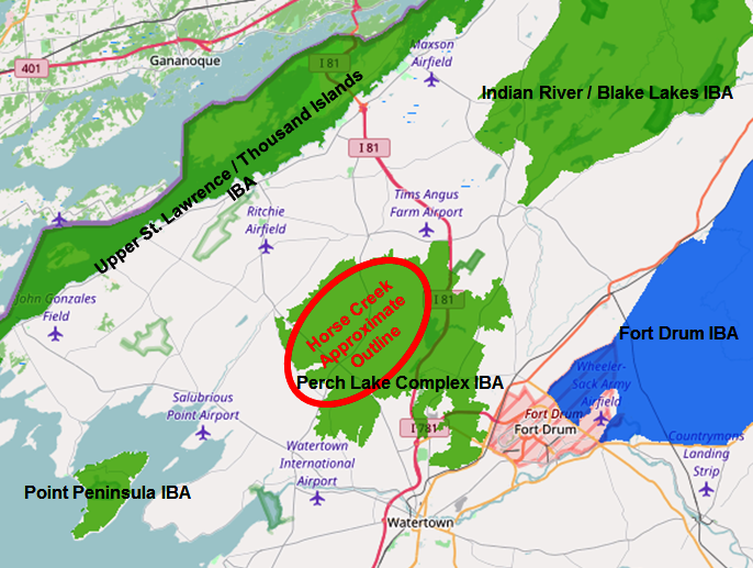
Perch Lake Complex Important Bird Area
The Perch Lake Complex, according to the Audubon Society,
“supports an exceptional wetland bird community, with a diverse array of wetland – and grassland-associated birds. This 7,862 acre site supports one of the largest concentrations of breeding grassland birds in the state.
In 1996, there were an estimated one Black Rail, 5-10 Sedge Wrens, 10-20 Grasshopper Sparrows, and 50-70 Henslow’s Sparrows within the area. Point count surveys in the area in 1997 tallied 10 plus Upland Sandpipers, 400 plus Savannah Sparrows, 100 plus Grasshopper Sparrows, 80 plus Henslow’s Sparrows, 400 plus Bobolinks, and 150 plus Eastern Meadowlarks. Northern Harriers breed here as well.
Additional species at risk supported at the site include the American Black Duck, Pied-billed Grebe, American Bittern, Least Bittern, Osprey, Bald eagle, Sharp-shinned Hawk, American Woodcock, Black Tern, Whip-poor-will, Willow Flycatcher, Horned Lark, Sedge Wren, Wood Thrush, and Vesper Sparrow. Many other characteristic wetland species breed here, including Virginia Rails, Sora, Common Moorhens, American Coots, Marsh Wrens, Swamp Sparrows, and many others. Trumpeter Swans have recently bred, possibly originating from birds released in Canada or privately.
Portions of this site have been designated as a state Bird Conservation Area. The WMA is managed specifically for wildlife conservation. An inventory of state-listed species was completed in the late 1990s. Continued monitoring of at-risk species is needed. This is one of the state’s most important sites for nesting Henslow’s Sparrow, and management should take this high priority species into account. A plan is needed to work with farmers to conserve agricultural lands beneficial to grassland birds.”
Upper St. Lawrence / Thousand Islands Important Bird Area
Massive numbers of Canvasback and Redhead ducks are found in the area. Hundreds, if not thousands, of Great Blue Herons are also found. Bald eagles also call the St. Lawrence River home, and many nests can be seen throughout the islands.
Many at-risk species, such as Common Loons, Ospreys, Bald eagles, Red-shouldered Hawks, Common and Black Terns, Northern Harriers, Least Bitterns, Red-headed Woodpeckers, Willow Flycatchers, Wood Thrushes, Cerulean Warblers, and Whip-poor-wills are found throughout the project area and impact zone.
Again we ask – Why put all this in jeopardy for the poorly sited Horse Creek project?
A Few of our Feathered Neighbors – But For How Long?
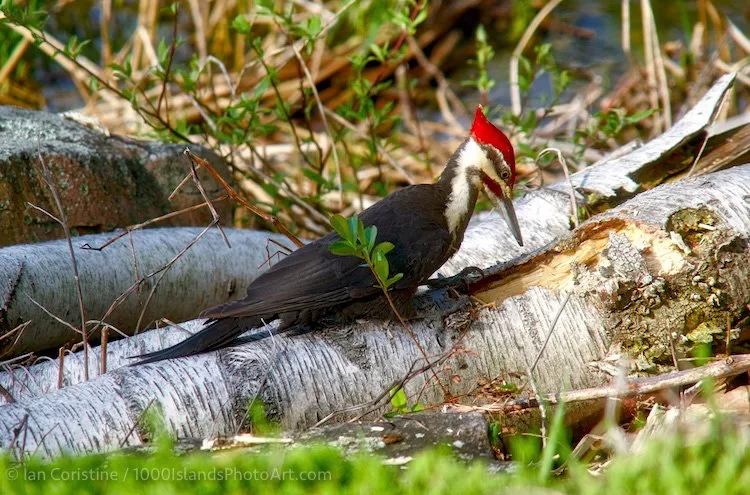
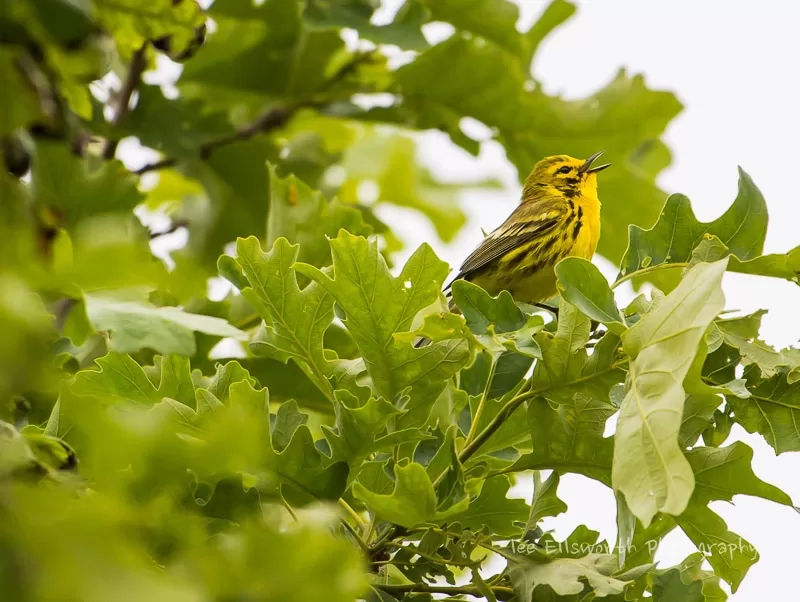
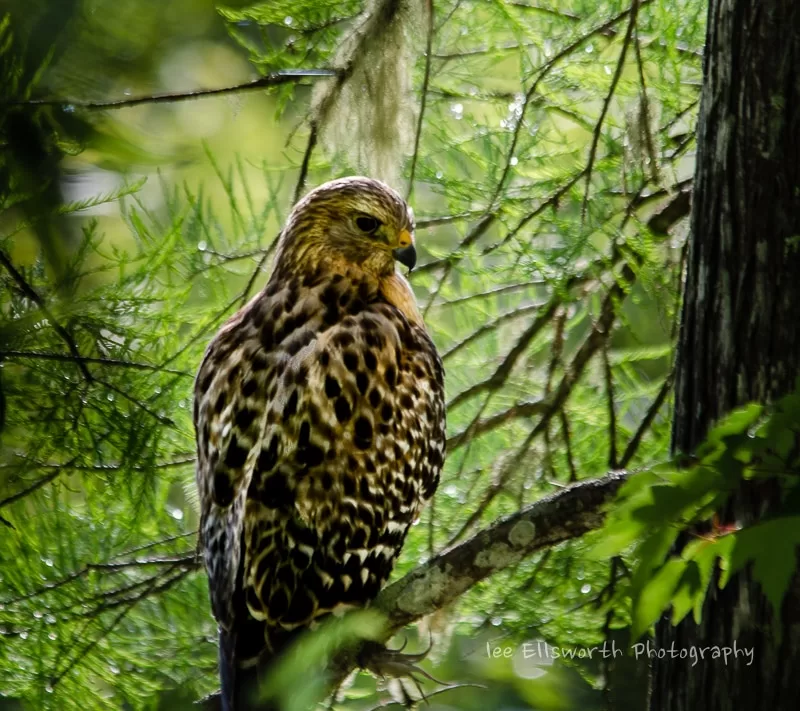
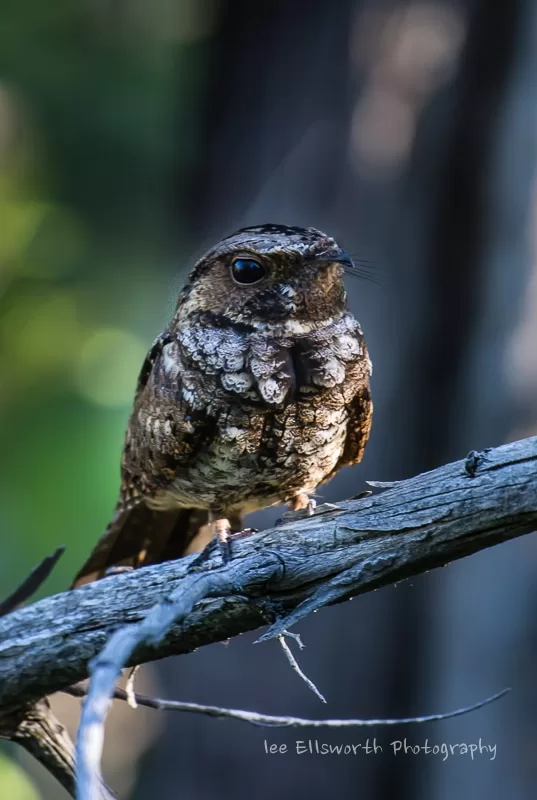
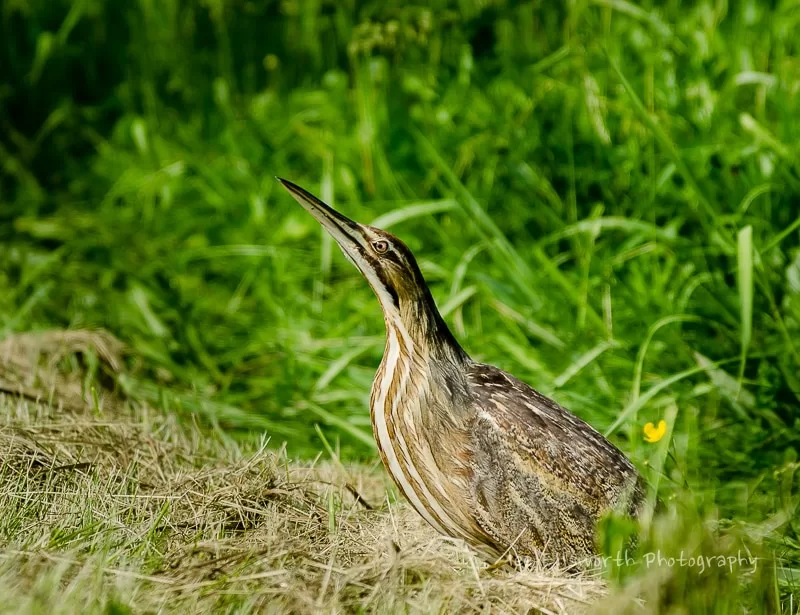
What Wind Turbines Do to Birds and Bats
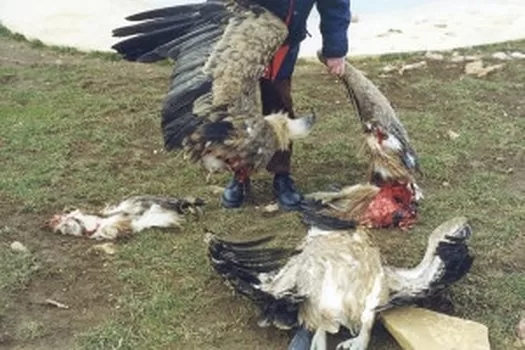
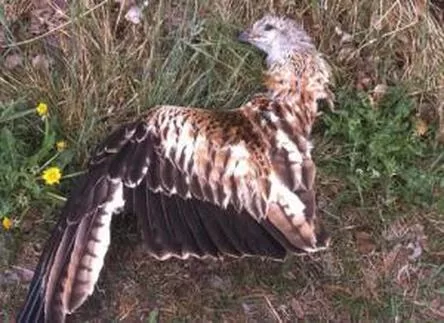
© All rights reserved
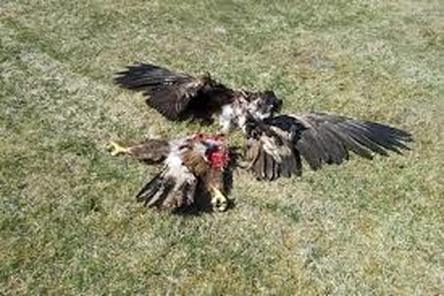
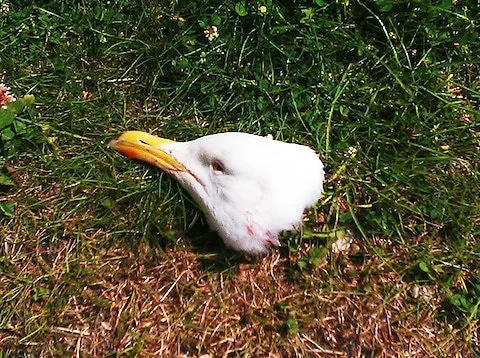
Continue reading full article >>
Top Banner Photo: Save the Eagles International © All rights reserved
